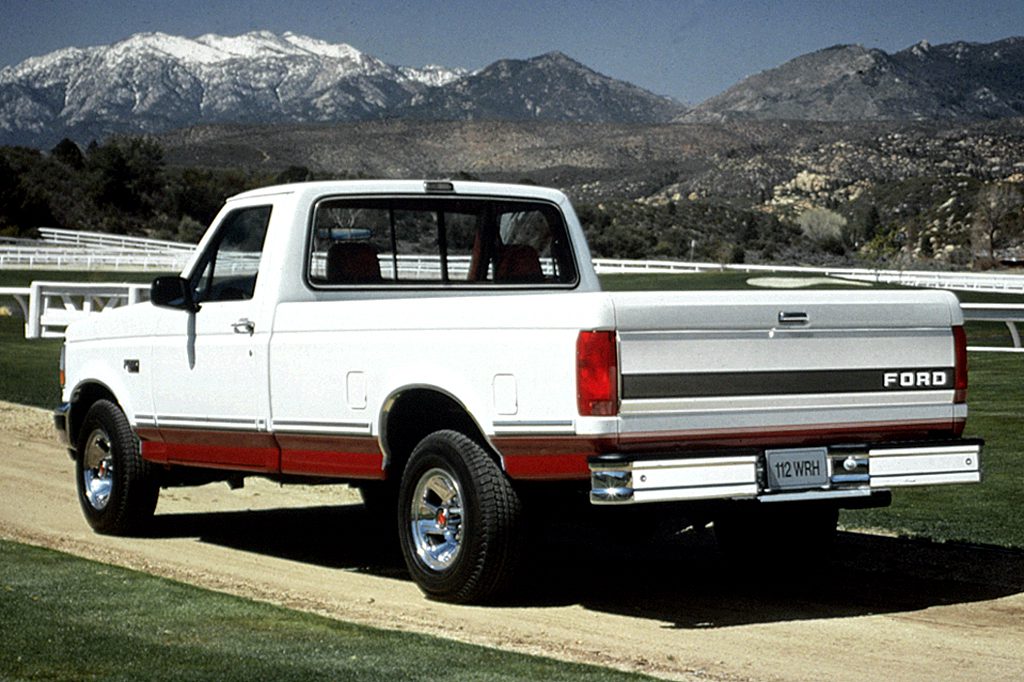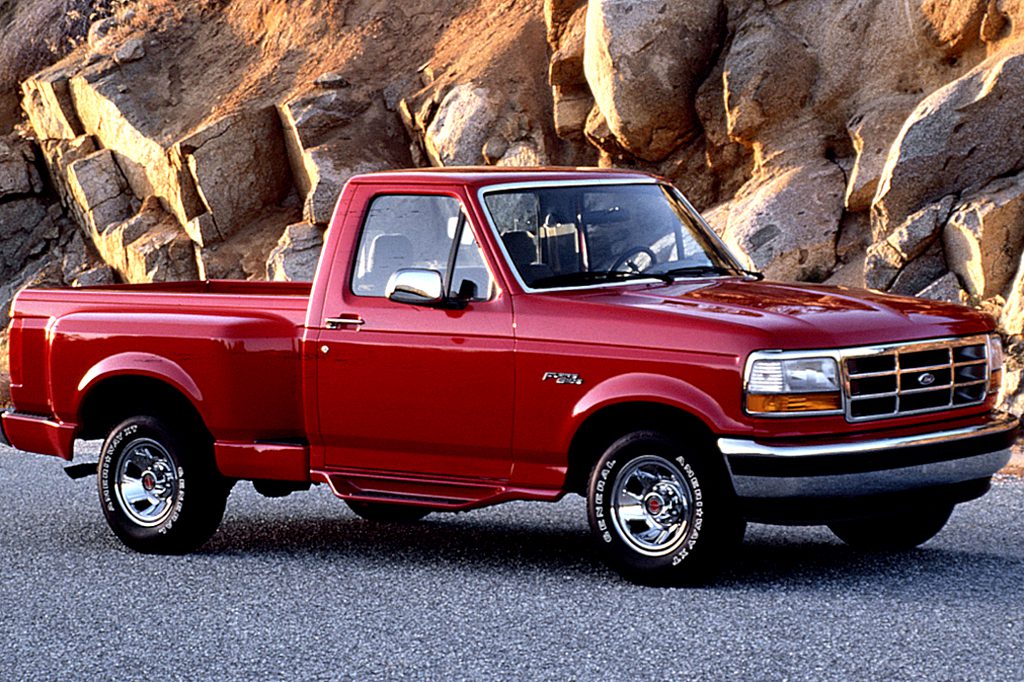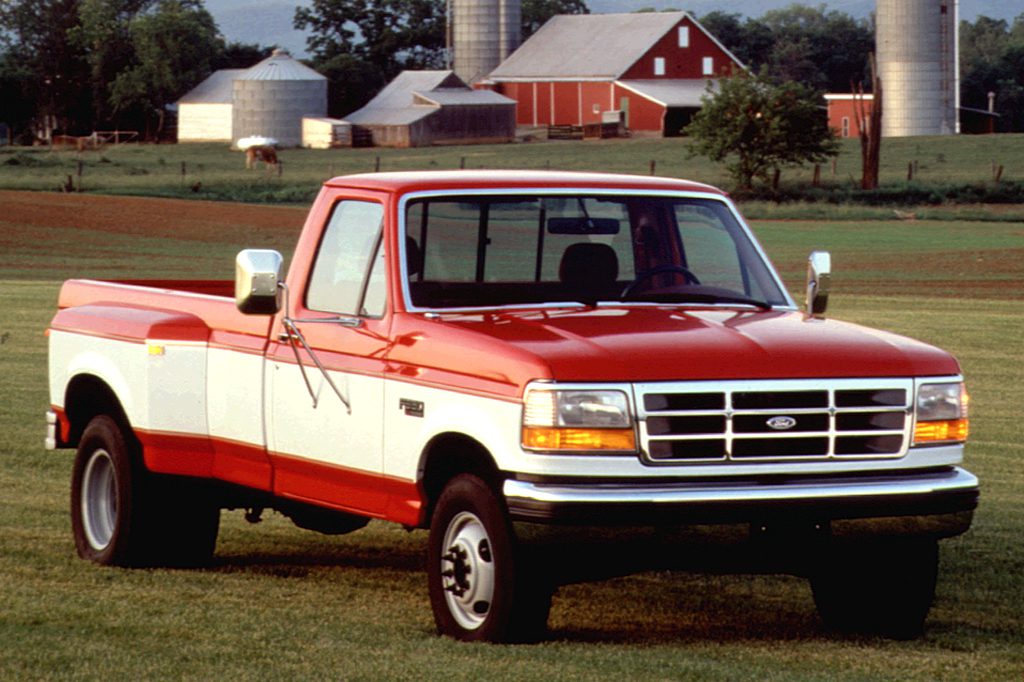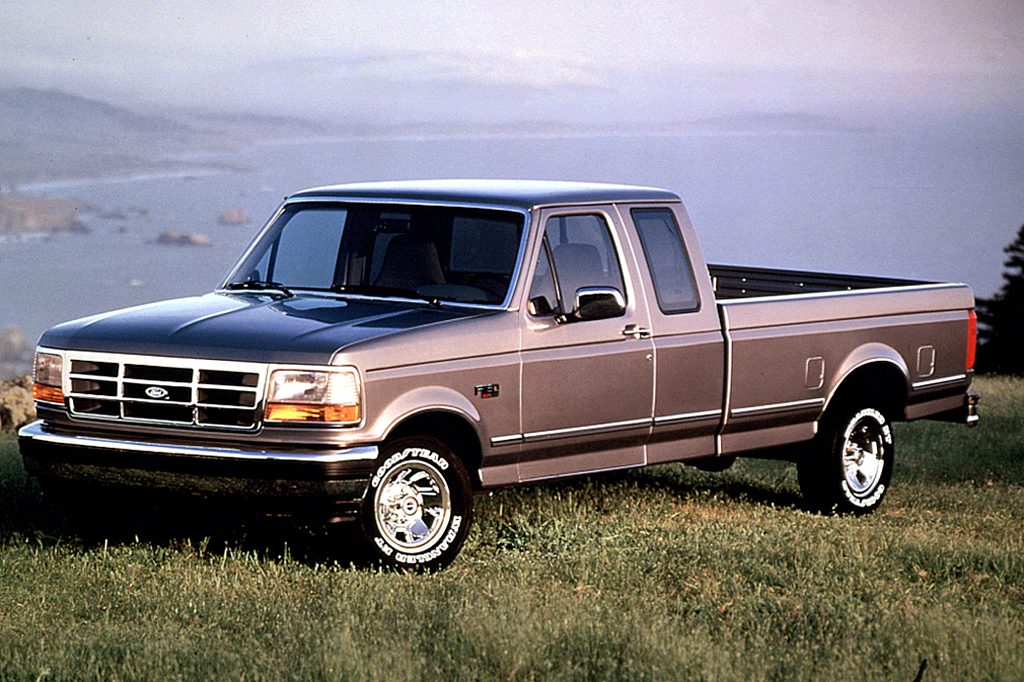| Large pickup truck; Built in USA, Mexico, Canada |
|
|
| Good condition price range: $1,000 – $5,000* |

1990 Ford F-150 regular cab

1992 Ford F-150 Lariat regular cab

1994 Ford F-150 Flareside regular cab

1995 Ford F-350 regular cab w/dual rear wheels

1996 Ford F-150 SuperCab extended cab

1994 Ford F-150 XLT interior
| Pros: |
|
| Cons: |
|
If you’re in the market for a pickup in this league, also look at the Chevrolet C/K and Dodge Ram. But we put the F-Series at the top of our list in terms of room, power, payload, and trailer-towing ability.
Overview
Introduced for 1980, Ford’s full-size pickups came in three series: F-150 for 1/2-ton capacity; F-250 for 3/4-ton; and F-350 for 1-ton. An F-250 Heavy Duty model also was available. Ford had dropped Flareside trucks with flared rear fenders in 1988, so all F-Series models were called Styleside. The short-bed F-150 had a 116.8-inch wheelbase and 6 3/4-foot cargo bed. A long-bed regular cab rode a 133-inch wheelbase, holding an 8-foot cargo bed. SuperCabs rode a 138.8-inch wheelbase with a 7-foot bed, or 155-inch with an 8-foot bed. Base engine was a 4.9-liter inline six, with a selection of V8 options. Antilock rear braking was standard. Available 4-wheel drive was an on-demand, part-time system. Automatic-locking hubs were phased-in starting in 1989 on F-150 models. Bench seats were standard, and SuperCabs had a folding rear bench. Front captain’s chairs were optional, while SuperCabs might have rear jump seats.
Yearly Updates
| 1991 F-150/250 Pickup A new “Nite” option package for the F-150 went on sale this year, and the F-Series saw several powertrain changes. Automatic-locking front hubs became standard on F-250 and F-350 4x4s. A Touch Drive (pushbutton) electronic transfer case became available during the year for F-150 4WD models. |
| 1992 F-150/250 Pickup Ford gave the F-Series a front-end facelift with rounded nose and broader grille, plus a new dashboard. Ford also revived the Flareside (rear-fendered) model in the short-bed F-150 series. |
| 1993 F-150/250 Pickup A high-performance Lightning model joined in 1993 with a modified 240-horsepower 5.8-liter V8. It’s an F-150 2WD regular-cab Styleside short-bed, featuring a lowered sport suspension and 17-inch tires on alloy wheels, among other extras. |
| 1994 F-150/250 Pickup A driver-side airbag went into 1994 models with a gross vehicle weight below 8500 pounds. |
| 1995 F-150/250 Pickup A new 7.3-liter turbocharged diesel engine became available, replacing the regular diesel V8. |
| 1996 F-150/250 Pickup The F-150 lost its SuperCab body and Flareside cargo box this year. An all-new, more rounded F-150 arrived in January 1996 as an early ’97 model. |
